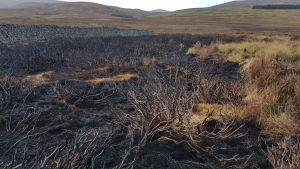Peatland Restoration Sweden (LIFE to Ad(d)mire: Mire and Wetland Restoration)
Introduction
The Life to ad(d)mire project will restore 35 Natura 2000 sites in Sweden between 2010-2015. In total, 3000 ha of rich fens and large peatlands will be restored.
Project Aims
Funded by EU LIFE, this project aims to stop the decrease of Natura 2000 habitats and species through hydrological restoration and vegetation measures. It aims to restore 3852 ha in 11 Natura 2000 habitats, targeting six species in the Species and Habitat Directive and 14 species in the Birds Directive. The Life to ad(d) mire project is focusing on two key issues:
- The loss of mires and wetland due to disturbed hydrology To restore the hydrological functioning of these sites, excavators are used to fill ditches with material from the site. This is carried out during the summer months. If there is a lot of vegetation alongside the ditches then this is either removed in advance of the restoration process (i.e. the winter before) or removed during the restoration work.
- The loss of mires and wetlands due to loss of historical agricultural management. At the sites where only vegetation measures are planned, the work is often carried out over several years. The actions taken include haymaking, mowing and removal of common reed.
Restoration Delivered
Since the project is taking part in so many regions is Sweden, from the agricultural south to the boreal north, the problems and measures differ in each and every one of the sites. In the south there are many stakeholders to consider and involve. In the middle part of Sweden there are restorations going on at old peat mining mires, where the historical values have to be taken into consideration. Finally, in the north the greatest challenge is the large distances between roads and sites. This has provided the project team with important experience with several varying factors, which is a great strength for land management in Sweden, and wider Europe. The work of this project hopes to lead to a reduction of CO2 emissions and cleaner ground water due to the reduction of nutrients and substrate transported to the surrounding rivers, creeks and lakes. The restoration will also decrease the level of landscape fragmentation, benefitting birds and other terrestrial species.
Site Activity
The most important indicators of success are measured throughout the process, including birds, vegetation, ground water levels and water chemistry. In most of the 35 mires and wetlands, groundwater pipes have been installed inside and outside the Natura 2000 site to monitor the groundwater levels before, during and after the restorations. Water samples are taken several times each year to monitor the water chemistry before, during and after the restorations, and aerial photos were taken before restorations started and will be taken again at the end of the project. The bird monitoring is carried out during the spring with each site being visited two or three times during that season.
Project Name: Peatland Restoration Sweden (LIFE to Ad(d)mire: Mire and Wetland Restoration)
Organisation / Lead partner: LIFE to Ad(d)mire Sweden
Predominately: Upland
Project Type: Restoration
Year Project Began: 2010
Project End Date: 2015










